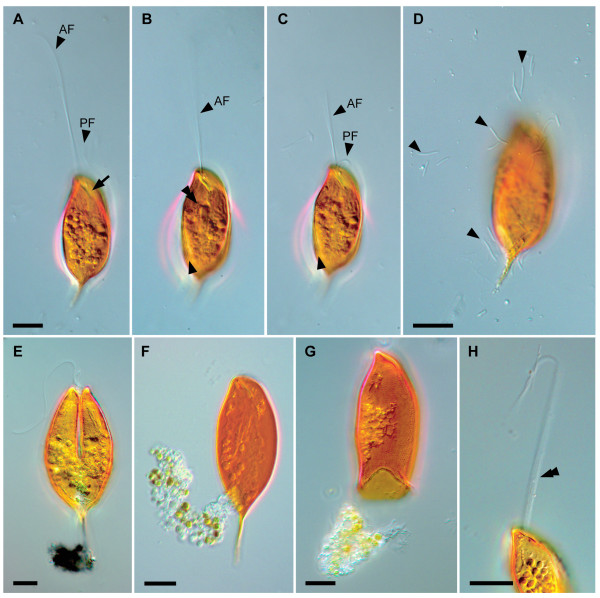Figure 1.
Differential interference contrast images of the living cell of Calkinsia aureus. The micrographs show the distinctively orange color of the cell, two flagella, epibiotic bacteria and ingested material. A. Anterior flagellum (AF) and the posterior flagellum (PF) inserted into an anterior opening (arrow). The ingested material is present in the middle and posterior regions of the cell. B. Surface striations (arrowhead) and a longitudinal rod-like structure (double arrowhead) indicative of a feeding apparatus. C. AF and PF emerging from the anterior opening. The arrowhead shows striation on the surface of the cell. D. Bacteria (arrowheads) that have disassociated with C. aureus. E. A cell undergoing division showing a longitudinal cleavage furrow starts from the anterior end. The ingested material is present in the middle and posterior regions of the cell. F. Clear cytoplasm extruded from posterior of the cell. G. Bright orange extracellular matrix. H. Bundle of extrusomes (double arrowhead) that have been discharged from extrusomal pocket through the anterior opening. (bars = 10 μm, A-C at same scale).

